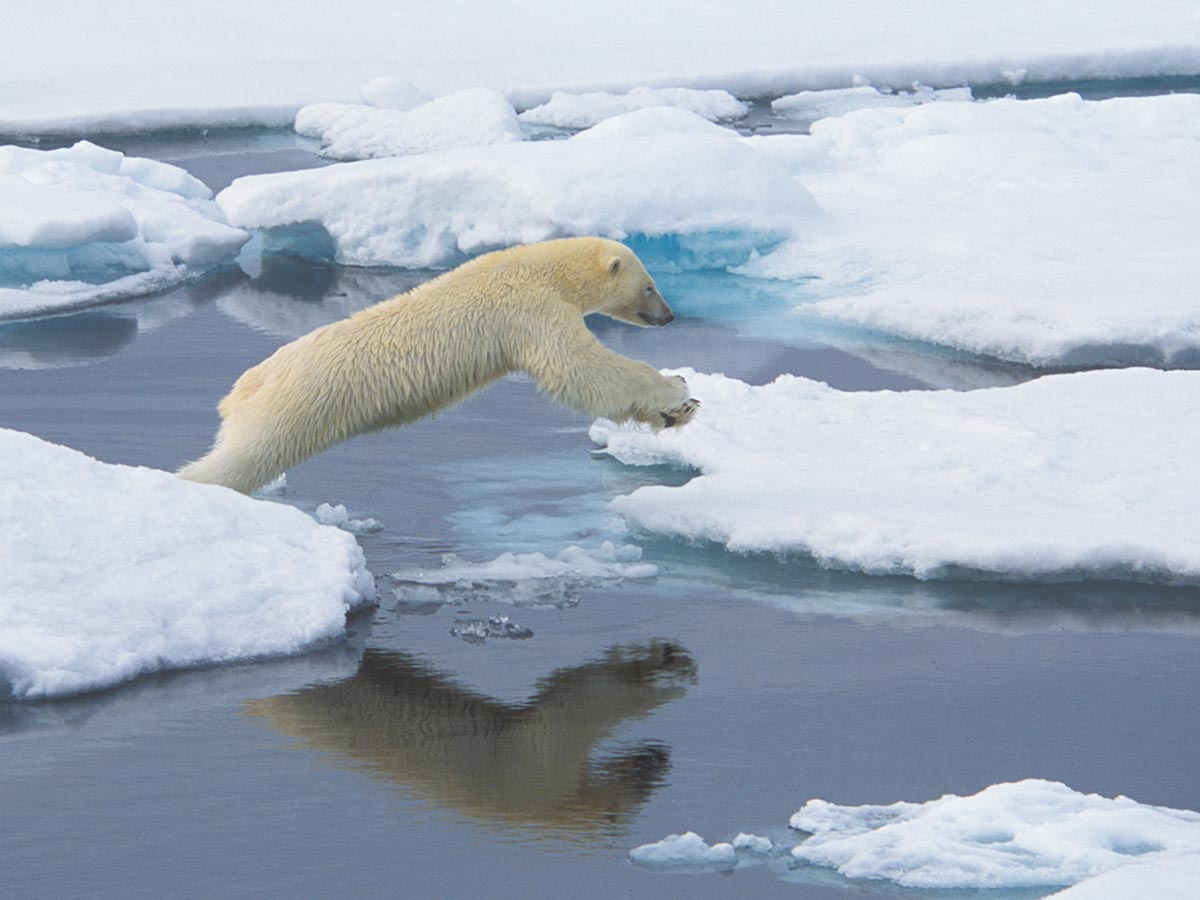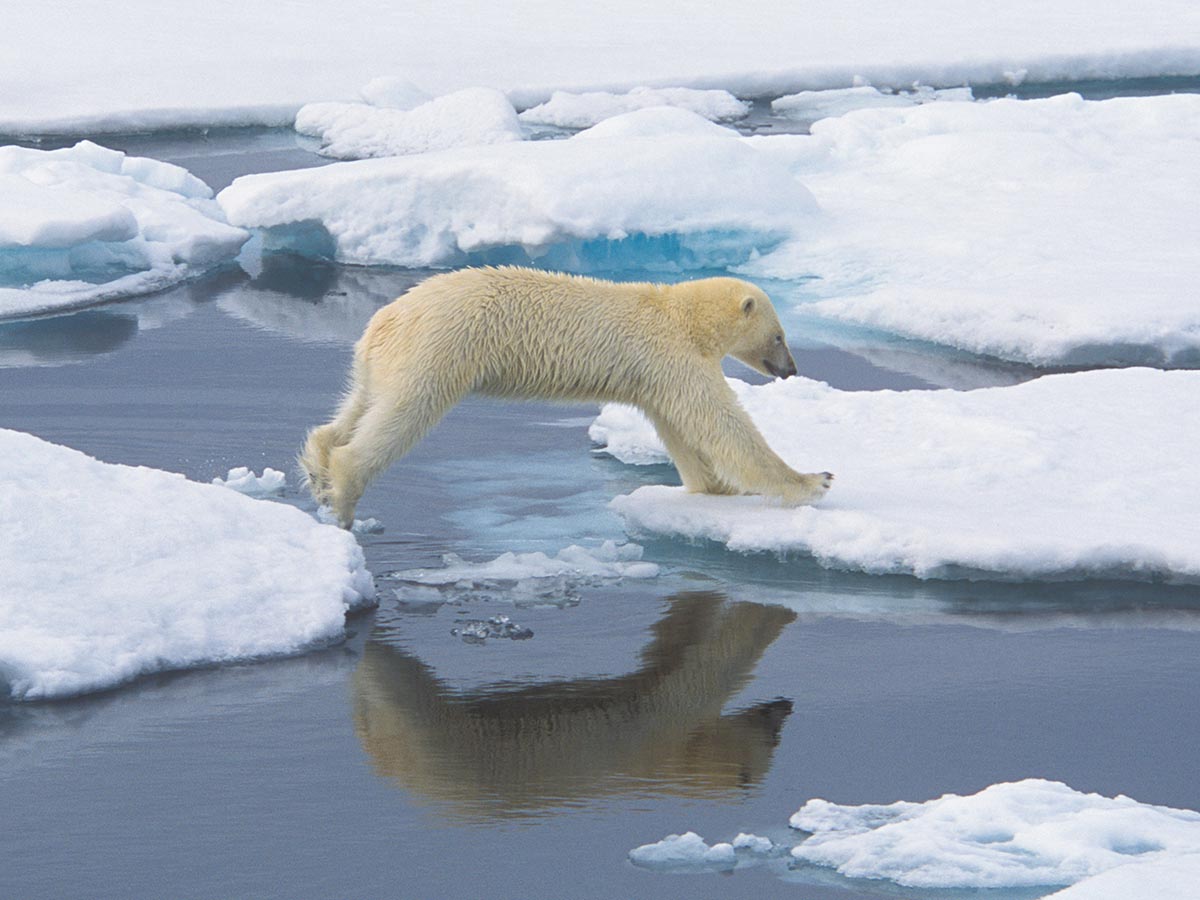It was the first polar bear trek for Steven Barger, M.Photog., and it wasn’t going like he’d imagined. The trip was eight days, and the first six were maddeningly bear-less. “I didn’t see anything,” he says, “and I am thinking, boy, this is not one of my better choices.” On the seventh day of frigid cold with his camera trained on a bear den, Barger watched a mother poke her head out. He snapped the shutter a few times, thinking he finally had what he’d come for. “I got back to the lodge, and the images on my computer screen were absolutely terrible,” he says. The bear’s face was in focus, but the composition was laughable—it looked like the bear’s head was on a white platter. “It was just not a good picture,” he chuckles. On the final day of the trip, a mama bear and cubs finally came into full view, and he was able to take the kinds of photos he’d envisioned. “So really, the patience worked out,” he says. “But, boy, those first seven days were just psychological devastation.”
TREKKING
Barger got into photography as a hobby while working as an engineer and teaching engineering at the University of Cincinnati. He started with car races and eventually pivoted to wildlife photography since he and his wife loved spending time outdoors. Photography provided him with an outlet to relieve stress from his work, he says. It was therapeutic and relaxing. Once he retired from engineering, he made photography his full-time career and now runs a studio in Cincinnati, exhibiting and selling his work at galleries in the United States and abroad.



Barger has photographed wildlife in many places, but for guided polar bear treks, he primarily travels to Wapusk National Park, south of Churchill, Manitoba, along Hudson Bay. One of the challenges of wildlife photography is the time it takes to get to remote locations. A journey to Churchill requires a couple of days of connecting flights, an hour-and-a-half train ride, and then passage through deep snow in a tundra vehicle that tops out at five miles an hour. After arrivng at the lodge, Barger is met by guides who use tundra vehicles to take him and other photographers to where the bears are.
Each day, the outfitter’s guides and wildlife researchers canvas the area via snowmobile and helicopter to see where the bears are located and whether they’re within a radius that the tundra vehicles can reach. If so, they’ll take the photographers to those specific areas, and if not, they’ll bring them to known migration paths and denning sites where they’re likely to see bears. Photography treks typically take place in February and March, after the polar bear mothers have given birth and are emerging from their dens to migrate with their cubs to Hudson Bay for seal hunting. Before they migrate, they often stick around the denning area for a few days to make sure their cubs are ready for the 30-mile trek. And that’s prime photography time.
Storytelling and a connection with his subject are integral to his style of photography, Barger says. Through experience, he’s developed a sense of when something interesting is about to happen, and that anticipation makes all the difference in his work. “By the time you see it and your brain has processed it and then you press the shutter button, and the camera records the image, the moment is gone because we are talking about a split second,” he says. So, it’s important to detect something special before and as it’s developing. “I’m not trying to pick the moment it is going to happen,” he says. That’s not possible. “But I know it’s going to happen, so before it develops, I’m taking pictures. And I come back after it’s over and look through the sequence and pick out the image that best depicts what I’m trying to portray or what I saw happen through the lens of the camera as it was unfolding.”

LESSONS FROM THE FIELD
Over his 25 years of making wildlife images, Barger has learned a few things about the process.
• Never go it alone in polar bear country. In the 40-below temperatures and treacherous icy areas where polar bears live, even the guides are required to travel in pairs and pairs of snow mobiles in case one of the vehicles breaks down and they lose radio communication.
• Give the animals space. Remain at least 100 yards away from polar bears. They know the photographers are there, he says, and they’re OK with it if that distance is maintained. Once, when photographing bull moose sparring in Alaska, he looked to his left and noticed a moose “giving me the old stink eye,” he says. He picked up his tripod and moved 15 steps away, and the moose relaxed. Space means everything.
• Avoid sudden movements and loud noises. Wildlife sense you’re there, so there’s no reason to try to hide while photographing them. The important thing is to remain nonthreatening by moving slowly and remaining quiet or speaking only in a low voice. “I don’t want to make any sudden movements that might scare the animal or make them think I am showing some aggression,” he says. Even when he’s moving his arms or body around to make photographs, “Everything is slow and easy,” and there is no chitchat with other photographers.
• Pack light. Sometimes travel to a remote locale requires boarding a small aircraft with strict weight restrictions, which means budgeting equipment (a camera and lens can weigh as much as 10 pounds) as well as clothing. Barger has found that switching from a DSLR to a mirrorless camera has saved him in both weight and volume—so much so that he’s able to carry a smaller pack.
• With a DSLR, take advantage of the sound of the shutter. Once, while photographing a female wolf, Barger clicked the shutter once to get her attention, and then fired off three quick shots of her looking his way. “I got what I wanted, but I didn’t fire off 20 or 30 images,” he says, which might have triggered her to run.
• Know animal behavior. Learning your subjects’ behavior will help you anticipate photographic moments. It also helps in terms of safety. “If an animal is getting irritated with you, they will flash a sign and you’ll pick up on that and say, OK, it’s time to leave, it’s time to move,” says Barger.
• Be prepared, but also go with the flow. It’s fine to have a plan for certain subjects you’d like to photograph, but be open to other opportunities that might arise. Stay positive and “avoid letting your emotions influence your ability to see what is going on around you,” Barger says.
• Pack right. It’s important to bring the right equipment for a polar bear trek. Barger packs a long lens because he must stay 100 yards away from the animals. Also consider the weight and volume of your pack so you can remain mobile. “I don’t want to be traipsing around with 50 pounds of camera gear in the snow,” he says. Pack the appropriate clothing for the weather conditions as well. “If you’re out and photographing and you are miserable, you are cold, you are wet, then you’re not going to take good pictures.”
• Practice patience. As Barger learned from his first polar bear trek, the drama may unfold slowly. “Nature will generally deliver, but it may take a little while,” he says. “She is going to do it on her own time, not on yours, so relax and be aware and keep positive thoughts.” The beauty will come.
Amanda Arnold is a senior editor


 View Gallery
View Gallery
